What the Dye Diet Calculator can do for you?
Not hunger, not weapons of mass-destruction, not even greenhouse effect but profit-driven industrial mass-production of food is the biggest problem of today’s world that destroys the natural environment and life on the planet altogether. In this madness, year after year, human civilization dangerously deviates further away from its natural ways. With over 3000 FDA-approved food additives in the American food supply it is easy for anyone to get confused about nutritional quality of what we eat and drink. What is healthy? What is less healthy and what is plain harmful? These are the questions we better answer before buying a grocery product but to learn what exactly you just have eaten is a good idea too. To know these answers often means to protect yourself and your loved ones from long-term health damaging consequences.
Lists of ingredients are the key information that helps us to make the decision: To buy or to avoid a product. Although ingredient lists are always on the labels they are too technical and too difficult to read and to be interpreted by a majority of consumers. The Dye Diet Calculator does this for you! Furthermore, after it analyzes ingredients the Dye Diet Calculator provides you with two critical values: Health Risk and Nutritional Value of a product.
Dye Diet Calculator helps to make decision
It is simple: The lower Health Risk and the higher Nutritional Value the better. Hence in theory, the safest product you may want to buy is when Health Risk = 0 and Nutritional Value is limitless. But even if Health Risk = 0 it only means that you can safely eat a product in moderation because absolutely anything is harmful if overly consumed; no exceptions. In the real life we often deal with intermediate situations like in an example below.
Dye Diet Calculator: A product is in the database
You start with typing-in a product name. If a product is already in the database because it has been introduced by somebody else, the suggestion will appear in drop-down menu and you will immediately see the calculation result as shown below
The results include:
- Health Risk = 0.82, yellow
- Nutritional Value = 1.21, green
- List of all ingredients with links
- List of additives to avoid cross linked with other products
- Caloric content
- Sugar content
Yellow color of Health Risk block corresponds to moderate dangers and green color of the Nutritional Value block tells you that there is a number of ingredients in the product that your body can use as nutrients to build tissues and support your life. There are also red (alarmingly bad) and purple (unacceptable) colors reserved for the most dangerous and wasteful products. Full list of all the ingredients appears on the right with links for further reading and learning.
Another list, a list of food additives to avoid, you find inside the Health Risk block. If you click on any of them the Dye Diet Calculator gives you a list of other products in the database that contain the same unwilling additive, sulfur dioxide, for instance:
If you would like to know why sulfur dioxide is dangerous you can click on corresponding link on the right and learn the details. In addition, the results may include caloric content, sugar content and a link to detailed nutrition information, as shown with blue arrows on the upper screen shot.
The decision is yours
After you have understood the calculation results you decide if you still want a product or not. Sometimes the outcome may seem a little confusing as in the above case. In the Health Risk block you read: “Moderate Health Risk. The product is not recommended” and, in the same time the Nutrition Value outcome tells: “Moderate to Good Nutritional Value. The product is recommended.” This is what happens when a product contains only a few food additives to avoid (two in the above case) and large number of nutrients (eight). While soy lecithin and gelatin are poor nutrients they are not toxic additives in the amounts they are normally present. Therefore moderate nutritional value may come with moderate health risks (toxicity) for some products. This is obviously not the case for artificially sweetened and artificially colored diet drinks, Diet Dr Pepper Cherry, for instance:
As you see, in this case Health Risk is huge and Nutritional Value is miserable and therefore the both blocks come colored purple that is the sign of unacceptable: The product is a health damaging waste:
- Health Risk = 44.00, purple
- Nutritional Value = 0.02, purple
But the decision is yours and, if even after getting familiar with the calculation results and all the information about possible health issues associated with consumption of Red 40, aspartame, sodium benzoate, phosphoric acid and industrial caramel coloring you still choose to drink Diet Dr Pepper, your decision, while perhaps reckless, is respected.
Sour Cream Pure and Natural (Daisy) is a quite the opposite story.
- Health Risk = 0, green
- Nutritional Value = Outstanding, green
This all natural product comes with the lowest possible Health Risk and outstanding nutritional value. This means that you can eat it regularly in moderation without experiencing any negative health effects. Of course, lactose intolerant individuals should avoid dairy products but this is a different topic. In general, it is recommended to REJECT any product with HEALTH RISK > 0.9 (exceeding 0.9, high risks) and NUTRITIONAL VALUE < 0.9 (below 0.9, low nutritional values). You can see the legend if you click on “See recommendations” button.
When product is not in the database: Your help needed!
This is when some work needs to be done and when your help is highly appreciated. Let’s consider Bran Flakes from Trader Joe’s. When you start typing the name a prompt tells you that the product is not in the database: “Not found! Type in full product name carefully, check spelling!” So you keep typing in the full name like: Bran Flakes (Trader Joe’s) and that is what you see:
Then you hit “New calculation” button and see the fields to be filled:
First you will be asked to introduce caloric and sugar contents, URL link to the product Nutrition Facts at MyFitnessPal or at Calorie Count or elsewhere and then type in ingredients and ADD those one by one before finally hitting “Calculate!” button. I know, I know! That is pain in a butt but that’s what I do and that’s exactly why I am asking you to help with. You don’t have to type in every word all the way – the system will suggest you relevant options as soon as you start. But the whole entry may take a few minutes I am asking you to sacrifice. If every reader will introduce just ONE product we may have significant progress in helping other users who come later and who will not need to do the job.
In the process, list of ingredients and links appear on the right and, after the last ingredient is added, you hit the “Calculate!” button to see the results and store them in the database. Below is what you will see.
It looks nice, isn’t it?
- Health Risk = 0, green
- Nutritional Value = 3.25, green
- Caloric content 100 per ¾ cup (30 g)
- Sugar content 6 g
Health Risk is 0, Nutritional Value is very high and hence the both blocks are bright green: Bran Flakes from Trader Joe’s is a recommended product with no food additives to avoid. Hence it can be consumed in moderation on a regular basis for your nourishment and health. Click on “Reset” button if you wish to introduce another new product. Sometimes when a food additive is not in the database, product introduction may not be possible at that time. This may happen because there is no strict rules how to uniformly name this or that food additive. As the result, dozens of synonyms can be found for the same ingredient and not all of them may present in the database. But even if so unfortunate event happens, admin will be able to fix the problem later so your work and time will not be wasted. Also any comments and advices are highly appreciated.
Next user will instantaneously see the outcome by typing a product name without need to carry out the above work. Being a pioneer is never easy but it is always invaluable experience rendering a great deal of help to others who will come the way you paved. By contributing into the efforts to shape the Dye Diet Calculator we are helping each other to find our way to a healthier and happier future. Let’s go!
Category: Dye Diet Calculator

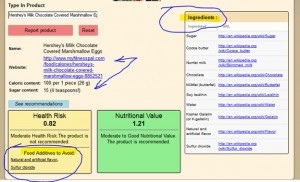
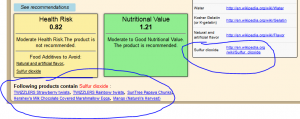
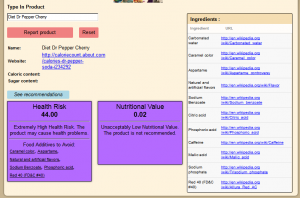
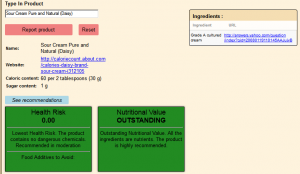
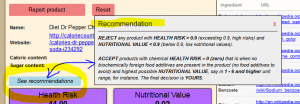
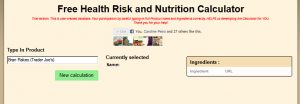
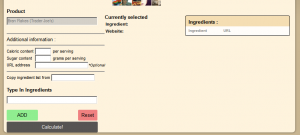
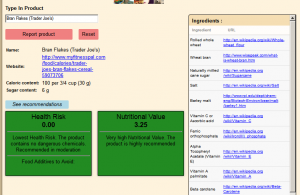




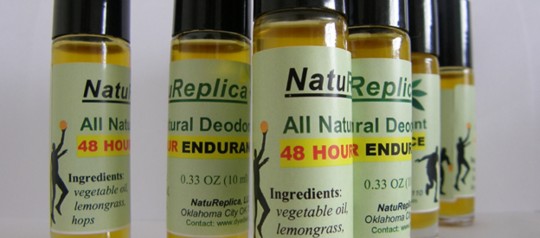
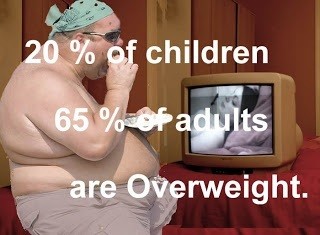
The warning signs of poor nutritional health are often overlooked. Use this checklist to see if you and/or someone you care for are at nutritional risk. Circle the number next to each item that applies to you.
Whether your goal is cutting calories or eating healthier, sugar substitutes abound. Understand the pros and cons to make an informed choice.
Unfortunately, artificial have never been tested for long-term health effects. Sucralose (Splenda) is completely strange to any living cell because it contains three chlorine atoms and structurally is close to pesticides. Aspartame is a dipeptide, that is benign in chemical structure aspect but latest independent studies shown that it triggers many types of cancers in laboratory animals. As consumers we better avoid anything controversial like aspartame: Better safe than sorry. The only safe zero calorie sugar substitute seems to be Stevia, a natural plant-derived substance and its commercial brands (Rebiana, Reb-A, Truvia).
REJECT any product with HEALTH RISK > 0.9 (exceeding 0.9, high risks) and NUTRITIONAL VALUE < 0.9 (below 0.9, low nutritional values).
The problem with the lots below were discovered when investigating the processing parameters for all manufactured products. The products withdrawn were distributed nationally through retail and direct mail and are limited to specific lots of the branded products. The affected lots follow.